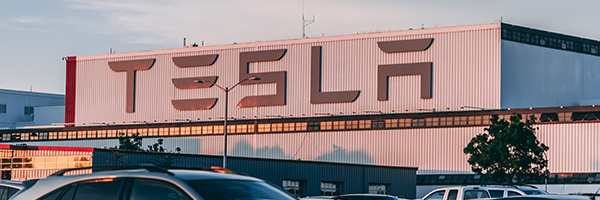Shares of Tesla (TSLA) fell 12.3% Wednesday July 24, after the company delivered bad financial news in its second quarter earnings report.
If you own Tesla or are thinking of buying the shares on this tumble, or indeed you own any stock in the current market, you need to understand the exact nature of Tesla’s troubles.
Total sales for the second quarter weren’t all that terrible considering the state of the electric vehicle market in China and in the United States. Total sales rose 2.3% year-over-year to $25.5 billion in the quarter. That was ahead of Wall Street expectations of $24.8 billion.
But earnings plunged 45% to $1.48 billion. Earnings per share fell to 52 cents against 91 cents a share a year ago and Wall Street projections for 62 cents a share. GAAP net income for the quarter was $1.5 billion and non-GAAP net income was $1.8 billion. Discounts and price cuts to match lower prices from Chinese competitors put pressure on the electric carmaker’s profit margins. CEO Elon Musk blamed “a bit of a hangover” after rivals cut prices “very substantially, which has made it a bit more difficult for Tesla”.
Now I know that shareholders, or at least the members of Tesla’s board of directors, think so highly of Musk that they’re paying him $45 billion, but in this case I think he’s dead wrong.
Tesla has a margin problem that’s more than “a bit of hangover.”
Operating margin rose to 6.3% of sales to improve from last quarter’s mark of 5.5%, but was still below the 9.6%.in the second quarter of 2023. Total GAAP gross margin was 18.0% vs. 18.2% a year ago and 17.4% in the prior quarter. For the quarter, Tesla’s adjusted EBITDA margin fell to 14.4% of sales from 18.7% a year ago.
Once again Tesla’s sales of regulatory credits to other automakers so that they can meet EPA mileage requirements rode to the rescue this quarter. Sales of regulatory credits nearly tripled to a record $890 million in the second quarter of 2024.
But those credits do nothing to erase the cost advantage that Chinese EV makers have. In the European market, the next big target for Chinese EV imports, the production cost advantage is estimated at $11,000 a car. Electric cars sold in China are roughly 40% cheaper than those sold in Europe, and 50% cheaper than in the US, according to research firm Jato Dynamics.The average price of an EV in China was $34,096 in the first half of 2022, compared with $59,797 in Europe and $68,429 in the United States,.
I’d also add that Chinese EV makers have been much more aggressive–and successful–in pushing a wide range of new models to market. Especially at lower piece points. That’s an area where Tesla has conspicuously lagged.
Can Tesla erase its cost–and thus margin–prblem? It wouldn’t be easy, but it’s not impossible. Part of China’s cost advantage coms from things–lower wages, lower R&D costs, larger government subsidies–that to me seem systematic and those just about impossible to address. Others–China’s use of cheaper battery technology–look fixable.
But fixing them at Tesla would rely on a nose to the grindstone approach to running the business that doesn’t seem part of the company’s culture.
From this point of view, even through the recent announcements on robots and robot taxis–where the big event date has, typically for Tesla, slipped again to October now–are critical, I think, to keeping the shareholder base moderately happy, all these new efforts and the capital spending to implement them, seem a distraction from the task of closing the production cost gap with Chinese EV makers.
Production of the carmaker’s next-generation Roadster sports car is scheduled to begin next year, Musk said on a conference call with investors on Tuesday.
Musk also said he would be “shocked” if Tesla does not introduce “unsupervised” self-driving software by 2025, and claimed that “several thousand” Optimus robots will be deployed in the company’s factories next year, before it starts manufacturing them for wider use.
I’d be shocked if Tesla hit any of these deadlines.
And beyond Tesla, I don’t think this company will be alone in reporting margin “concerns.” I think contracting margins are a widespread issue for companies across the economy as inflation slows but prices don’t actually fall either for raw materials or for consumers.


